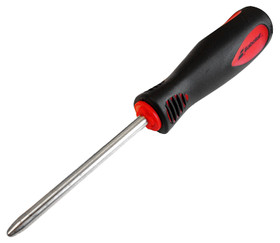Yonex EZONE Ai 98, Alpha Axis Pro, and I am not sure what you mean by "pattern."
You can probably tell I have only recently started stringing....
Your machine is a lockout and due to the low tensions in your signature the tension should not be causing your problem. Your pattern is fairly open and because your using two piece you should be stringing 2 piece top down so there are no hard weaves like you would run into with ATW patterns.
I can think of a few reasons that would cause you cross string to have high friction.
1) You are pulling too fast and may or may not have been fanning your crosses ass you did. Slow down.
2) After stringing the mains and tying off you run in the crosses. Bad idea the cross could be pressed vy hard between the main and the grommet on the holes the mains skipped at 8 head. Preweaving the top crosses at least two may help in cutting down on the friction. Run those crosses in from the bottom up, if your're preweaving three crosses weave the 3rd, 2nd, then the top last. Then using the other end to string the remaining crosses after tying off the mains.
3) Gosen Micro is a fairly slick sting and with a poly cross the crosses are going to develop a smile with every cross you string. Trying to straighten the string wont help too much because the string will slide down hill (away from tensioned cross) so as you tension a string and tie off straighten the previously tension string. If you're pulling cross 6 straighten 5 and 4.
4) Weave one ahead, before you tension a cross you should have two cross ran in. The last main tensioned will always hold some string high and others low. If you're going over the high ones and under the low one you crosses will have a lot of friction. Let's say you have tensioned the 8th cross and you have the 9th cross ran in. Now you're ready to string the 10th cross, and if you 9th cross is a aligned straight across the mains it pull down the high strings and pulls up the low string. Pull that 9th cross all the way up against the 8th cross before weaving the 10th and you will have less friction. After weaving that cross don't just run the tip through so you can find the end of the string easily. Pull as much as you can through while its going under the high and over the low so you have only a loop large enough to reach the gripper.
5) When you get down near the bottom the string bed gets stiffer. I like to then only string one cross at a time and often that's all the string you have room for anyway. I then use a needle and thread method of weaving and pull the string all the way through as I go. Try to avoild any twisting as you weave. Those twists add friction. Pull weaving is a good thing to learn.
6) Use a good fanning technique and avoid pulling the string through too fast.
Good luck.
EDIT: If you string the same racket over and over take not of how much string you use for the crosses. Cut you string so it is long enough to reach the gripper on the last cross and no more. Pulling an extra 2' through the mains 19 times comes to and extra full set of string your pull just on the crosses and that a lot of friction on the mains.


